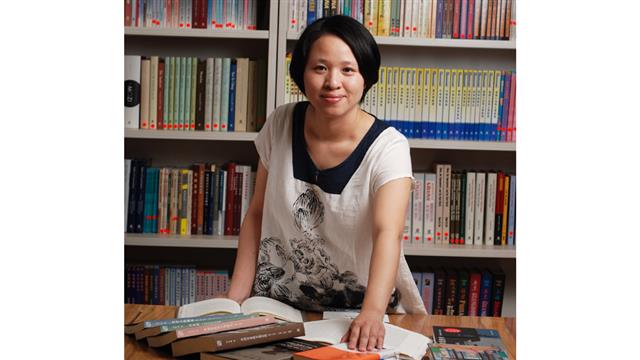What does an acquisition editor do?
Acquisition editors are gatekeepers of the quality of books produced by a publishing house. As an acquisition editor, I review book proposals and assist with the review of manuscripts. I also strive to keep myself updated on the new developments in the academic and publishing worlds, in order to look for the best manuscripts.
What experiences led you to this post?
In the 2012 Annual Conference of the Asian Studies Association in Toronto, I met Ms. Lin Ying, the managing editor of the Chinese University Press (CUP). Her life story inspired me. Having obtained her PhD degree from the University of Washington, she taught as an assistant professor in the Hong Kong University of Science and Technology. During that time, she volunteered to work for the CUP, which eventually changed her career path. Having found her true passion in publishing, Lin Ying decided to work as an editor, an occupation that makes far less money with much longer hours than teaching positions. I was told that editors do not necessarily make less academic contributions than scholars; in this era of over-specialization, scholars often become experts familiar with particular areas of a field. Good editors, in contrast, are required to focus on the big picture.
I also got to see director Gan Qi in the same conference. The whole editorial team was then working day and night on the Chinese translation of Deng Xiaoping and the Transformation of China by Ezra Vogel. While Lin Ying and other editors were checking the translation word by word, the director took on the task of touching up the writing. I was immediately recruited to proofread Chapters 13 to 15. This experience not only enabled me to become familiar with the work of editors, but also showed me a team that was passionate about their cultural mission and pursuit of intellectual excellence. I truly wished to become one of them!
What part does networking play in discovering authors and new titles?
Networking is extremely important for the publishing industry. As a university press, we expect to receive continuous support from the faculty members and various departments of CUHK. We plan to run a few workshops this autumn on how to publish journal articles and academic books. All are welcome to attend.
How to select manuscripts from the slush pile?
We have about 500 new submissions every year. All book manuscripts will go through initial screening by our editorial division. High-quality manuscripts are peer-reviewed by at least two experts. Based on external review, our publishing sub-committee will decide whether the manuscripts are publishable. In fact, many proposals that are turned down are very good. Due to limited resources, we simply have to focus on projects that fit our mission and style.
Do you measure each acquisition in terms of sales?
No. One example is The Mozi: A Complete Translation. It is a bilingual edition of over 1,000 pages. We knew its readership would be small, but we also saw the immense value this book as the first complete translation contains. The English edition was selected by Penguin Classics and is now distributed widely in the English-speaking world.
Can you tell us about one forthcoming project?
A new English series called Calligrams is coming out in January 2015. It is a selection of published and unpublished Chinese literary works and classical works on Chinese culture. The editor of this series is Eliot Weinberger, a famous writer, critic, editor, and winner of the American National Book Critics Circle Award. Our co-publisher is New York Review Books and the distributor in America is Random House, the largest trade publisher in the world. The first three titles in the Calligrams series are The Three Leaps of Wang Lun, The Literary Mind and the Carving of Dragons, and Chinese Rhyme-Prose.


